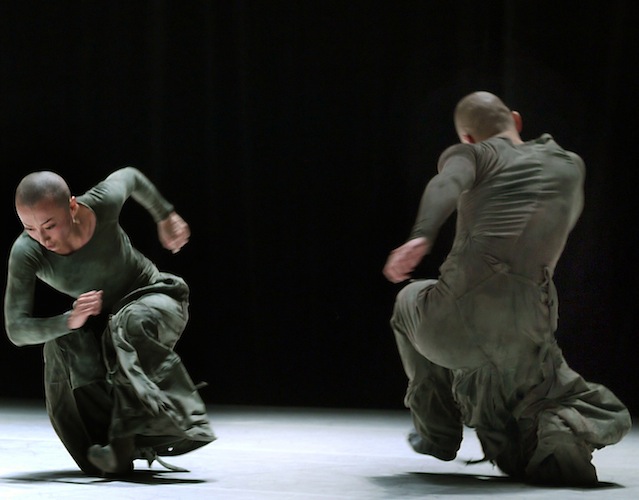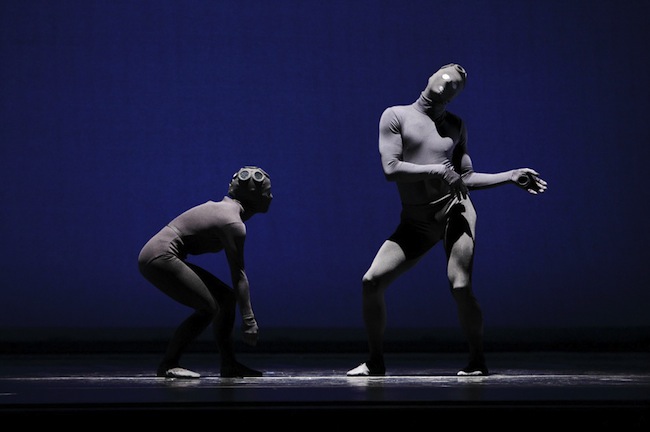Dance Review: TAO Dance Theater — All Wound Up
If calculating pi to a far-off-integer isn’t for you, TAO Dance Theater’s baffling kinetic exploits may seem less like an incredible journey than a trudge to a dead end.
TAO Dance Theater, presented by Celebrity Series of Boston at the Citi Shubert Theatre, last night. Repeats tonight (Feb 28)
By Debra Cash
Tao Ye is a force to be reckoned with. This young Chinese choreographer, who names each of his pieces for the number of performers featured, is nothing if not mathematical in his rigor. But if calculating pi to a far-off-integer isn’t for you, his company’s baffling kinetic exploits may seem less like an incredible journey than a trudge to a dead end.
4, which opened last night’s program, is the stronger of the two pieces on the program, a gender-neutral marvel of minimalism. The dancers’ faces are covered with dark gauze, their bodies rendered asymmetrical by soft teal tunics (the choreographer’s collaboration with Li Min) that drape over the left hand and are chopped to the right elbow, worn over knee-length black bloomers. Hinging movement from the knee, their heads hanging heavily from the stems of their necks, the dancers mark out their fluid march like a battalion of gnomes, each locked to his (or is it her?) assigned position in the quadrangle. Xiao He’s score would bring Steve Reich to happy tears: the men’s rhythmic chanting is all hard consonants and bubbling vowels that fall slightly out of phase and suddenly stall before accelerating.
Tao Ye may not be familiar with Paul Taylor’s 3 Epitaphs, but his characters’ loopy discipline shares more than a passing resemblance with that 1956 salvo of American experimentation.
5 brings Tao Ye’s uncompromising choreography down to the floor — and keeps it grounded. The five dancers don’t look like five dancers at all — their undulant tangle could be seaweed or a mass of litter kicked along the road. Sure, occasionally a head emerges, or a pair of legs lifts up like a banner, but during this existential journey the parts are readily reabsorbed into the whole. The honor here goes to lighting designer Ma Yue (collaborating with the choreographer) whose gloom gives way to a brighter light that finally lets the audience see the intricately balanced mechanisms beneath the dancers’ rolling pile. It is Ma’s lighting that shapes the piece’s punchline: when someone finally separates himself enough to stand, that small triumph is already too dark to see.
Debra Cash has reported, taught and lectured on dance, performing arts, design and cultural policy for print, broadcast and internet media. She regularly presents pre-concert talks, writes program notes and moderates events sponsored by World Music/CRASHarts and cultural venues throughout New England. A former Boston Globe and WBUR dance critic, she is a two-time winner of the Creative Arts Award for poetry from the Hadassah-Brandeis Institute and will return to the 2014 Bates Dance Festival as Scholar in Residence.
C 2014 Debra Cash


